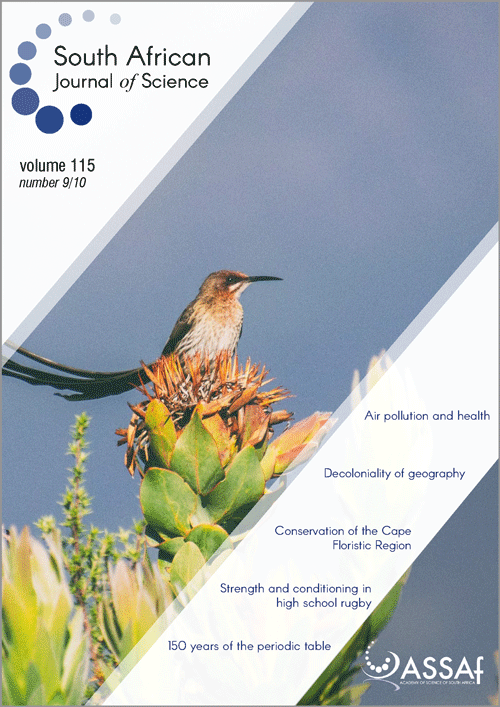Shellfish exploitation during the Oakhurst at Klipdrift Cave, southern Cape, South Africa
DOI:
https://doi.org/10.17159/sajs.2019/5578Keywords:
shell-fishing, predation pressure, palaeoclimate, environment, Terminal Pleistocene, coastal subsistenceAbstract
Klipdrift Cave in the southern Cape, South Africa, provides new insights into shellfish harvesting during the Later Stone Age (14–9 ka) period associated with the Oakhurst techno-complex. Two shellfish species dominate: Turbo sarmaticus and Dinoplax gigas. An abrupt shift in the relative frequencies of these species occurs in the middle of the sequence with T. sarmaticus almost completely replacing D. gigas. The shift in dominant species is likely due to environmental change caused by fluctuating sea levels rather than change in sea surface temperatures. The shellfish assemblage shows that local coastal habitats at Klipdrift Cave were somewhat different from those of contemporaneous sites in the southern Cape. Although the shellfish specimens are smaller at Klipdrift Cave than those from Middle Stone Age localities such as Blombos Cave, there is no robust indication that larger human populations at Klipdrift Cave during the Oakhurst period might have caused this change in size. Environmental or ecological factors could have restricted shellfish growth rates as some experimental works have suggested, but this possibility also remains to be further explored.
Significance:
- The dominance of D. gigas and T. sarmaticus at Klipdrift Cave is surprising, as it indicates a local habitat slightly different from other similar sites during the Oakhurst period.
- The shift in dominance from D. gigas to T. sarmaticus indicates changing climatic and environmental conditions during the Oakhurst period, 14–7 ka.
Downloads
Published
Issue
Section
License

All articles are published under a Creative Commons Attribution 4.0 International Licence
Copyright is retained by the authors. Readers are welcome to reproduce, share and adapt the content without permission provided the source is attributed.
Disclaimer: The publisher and editors accept no responsibility for statements made by the authors
How to Cite
- Abstract 1463
- PDF 653
- EPUB 241
- XML 432
- Supplementary Material 291












.png)